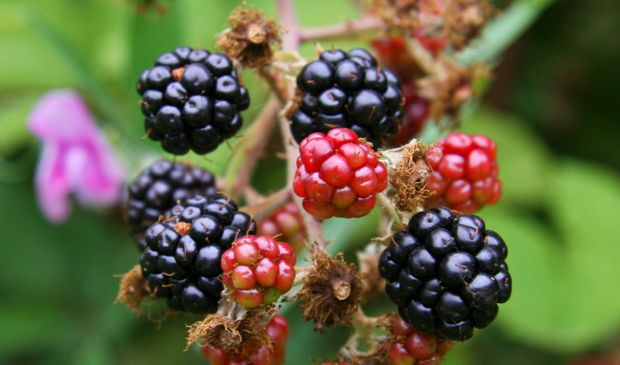Urban foraging may conjure images of wading through poison ivy in Prospect Park and picking out leafy greens and berries infused with city fumes. But, with apps like Wild Edibles with Wildman Steve Brill, a condensed guide for iPhone users on how and where to find the city’s 150 tastiest edibles, it now may be easier to navigate pesky bugs and unidentifiable plants.
“Wildman” Steve Brill has long been considered the leading expert on foraging in New York City parks. For over thirty years, Brill has led foraging and ecology expeditions throughout the Northeast. The self-described “go-to guy” on foraging has written three books on wild eating, including The Wild Vegan Cookbook, and has advised some of the city’s top chefs and the New York City Parks Department.
Though Brill is allowed to lead a limited number of foraging tours in the city’s parks, he has come under attack in recent years by conservationists and the Parks Department. Foraging in New York City parks is no new practice, but undoubtedly has attracted a stronger following in recent years as the push to eat locally has gained a wider following. In July 2011, the New York Times printed an article relating the ongoing tension between eager foragers and New York City park officials. On one end was a growing cohort of urban foragers that, perhaps motivated by a less than booming economy, took to the parks for food. On the other end was the increasingly disgruntled Parks Department that worried about imbalance in the park’s ecosystem. Maria Hernandez, director of horticulture for the Central Park Conservancy, lamented: “If people decide that they want to make their salads out of our plants, then we’re not going to have any chipmunks.”
Urban conservation biologist and executive director of NYC Wildflower Week Mariellé Anzelone states that incorporating imported edibles into the city’s limited green space presents a special problem for bees. In a recent article in the New York Times, Anzelone argued that a “farm-filled landscape would undermine [bee’s] critical ecological process.” Because wildflowers and native plants provide a more fixed supply of pollen and nectar than imported fruit trees, Anzelone argues that a human-feeding landscape with imported plants remains insensitive to wild bees’ job in the process.
Anzelone is a protector of true native habitats, a surprising amount of which continue to exist intact in the five boroughs alongside all the impacts from eight million people and their surrounding ecological interests of dogs, urban gardens, Starbucks, apartment buildings and highways.
With organizations such as FruiTrees New York pushing to plant urban orchards across the Five Boroughs, Anzelone’s perspective might seem to overlook the positive change that planting urban orchards could bring the city, both in terms of food justice and access to local food. Some argue that wild plants may in fact yield a higher nutritional content. How should policy be set? Maybe an expert panel, including long time advocates like Mariellé Anzelone and Steve Brill, as well as the Parks Department, and perhaps a historically minded ecologist like Eric Sanderson, could help the city map a way for true nature and human landscapes to flourish side-by-side. New York City has one of the ten best urban forests, a tremendous benefit to all kinds of life in the city.
Even since park officials have begun to clamp down on foraging by issuing summons to those who violate the official no-foraging policy in the city’s parks, in no way does there seem to be a hard-line policy towards foraging. Urban foragers largely remain unnoticed in the parks and “Wildman” Steve Brill can still lead private tours. He even reports that some park officials wave at him as he passes in the park. Maybe the berry-seeker should take that as a green light, then, to head out with a bucket–and maybe even an iPhone–to uncover the city’s tastiest, and edible, treats.
Photo credit: sidetour.com
